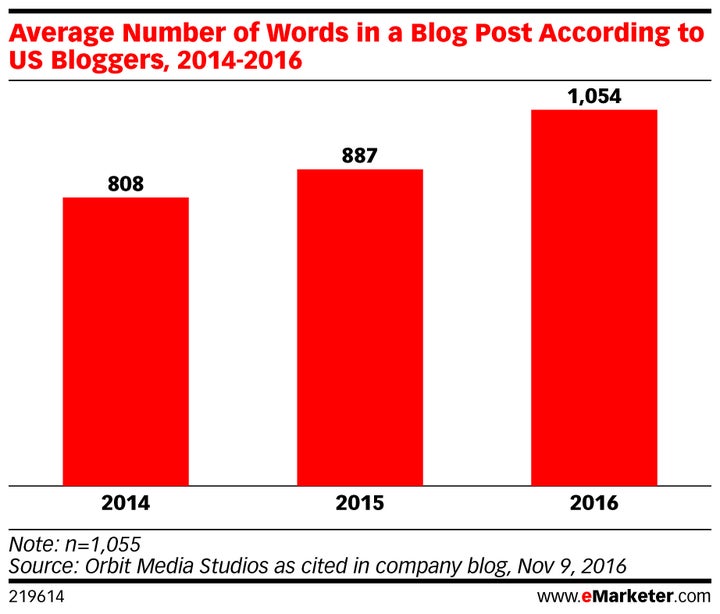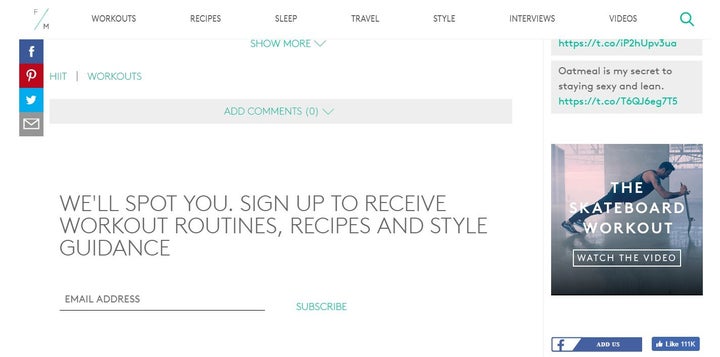
Way back before content marketing became a buzzword, it used to be that the simple fact of having a blog was enough to make brands feel they were doing a thorough job with their content efforts. These days, it’s clear that mediocre blog content is no longer enough to draw readership, shares, and links. It’s not that blogs themselves are inherently less effective than they used to be, it’s that the bar for quality is higher now and only blogs with worthwhile content get noticed.
It’s true that there’s a lot of value in diversifying the types of content you produce and in investing in more unique formats like podcasts, live streams, and video. But the utility of other content formats doesn’t negate the value of maintaining a well-written blog. In fact, 44% of B2B marketers still report that blog posts are an effective form of content marketing during the sales process, second only to white papers (eMarketer).
If you find yourself frustrated by the results your blog is generating, it may be time to reevaluate your marketing strategy and specifically, your tactics used when it comes to your blog. Want to create a blog that doesn’t just take up space on your website but actually encourages sales? Here are the tips you need to keep in mind.
1. Don’t write about yourself
The most boring blog content in the world is a corporate blog post that the company wrote to promote themselves. Posts like these provide little to no value to the reader and their sole purpose is to tell the world how great the company is.
There’s a frequently repeated rule in the writing world that one should seek to “show not tell.” It means that it’s more powerful to show a reader something than it is to tell him it. For example, show a reader that a character is generous through an action she takes, rather than simply saying “she was generous.” Through well-written and thoughtful blog content, a company can show the audience their expertise in a way that is far more impactful than telling them about it.

You can still highlight your accomplishments, but do so in a way that is interesting to users. For example, use case studies to both demonstrate the results your company is able to achieve for clients and also to provide useful tips, strategies, and ideas to your readers.
2. Solve a problem
The best way to get people to pay attention to your blog is to make it either useful or entertaining, or even a combination of both. Being genuinely entertaining is a pretty tall order, so aiming to be genuinely useful is usually a better strategy. A great way to be useful is to focus on helping the reader solve a problem. If your blog content can help a reader find the solution to a problem they’re having, or teach them some skill they need to learn in order to accomplish a task, they’re more likely to remember your brand in the future, and to become an engaged follower of your work.

3. Write thorough posts
You don’t want your posts to be thin, flimsy, or fluffy. Take the time to write content that is thoroughly researched and thoughtfully considered. Doing so may require extra time spent reading other content or digging up data, but that time spent will improve the quality of your work, making your blog more interesting to read.
It’s not all about word count, and you should avoid using flowery language or stuffing your piece full of unnecessary information just to make it longer, but it is worth noting that post lengths have been going up every year:

Which is not to say that 1,000 words is some sort of target everyone must hit. It’s better to write a really solid 800 word piece that covers the topic well, than to keep droning on in an attempt to hit 1,000 words. Look at this trend more as an indication that bloggers are putting more effort, thought, and research into their work in order to compete, and that’s what drives number counts higher. Think about what your post needs to say, and then make sure it’s thorough enough to cover the topic well.
4. Keep to a schedule
It’s a fact of life that it’s much easier to begin a project than it is to finish it. The same is true of maintaining a blog, except that a blog isn’t a project that is ever actually “finished”. Starting a blog is exciting -- you get to imagine all the great topics you’ll cover, all the interesting conversations you’ll have with readers. But the reality of running a blog is that it takes a lot of work and there will be many times when it feels like other tasks should take priority. Those are the times when you might be tempted to push your blog writing further down your to-do list to tomorrow, the next day, next week, until finally you realize it’s been months since your last post.
If you want to keep readers engaged with your blog, it’s important to make sure you’re posting regularly. There’s nothing like coming to a blog and seeing that the most recent post is from months ago to make a reader feel like your content is stale and outdated. So do your blog a favor and set a regular posting schedule.
5. Write captivating headlines
Writing good headlines is not easy to do. But for obvious reasons, headlines are very important to the success of your posts. The headline is the thing that makes a user want to click, whether she finds the post in search, social, or by coming directly to your blog.
Be strategic with your headlines. Ask yourself, does this sound interesting? Would I click on this link after reading the article’s headline? But don’t write flashy clickbait headlines that don’t accurately reflect the contents of your work. The headline is like a promise to the reader, and if you break that promise by writing an exaggerated headline, you’ll break the reader’s trust in the process.
It’s fair and smart to do some keyword research to get ideas for blog posts based on topics people tend to search for. You can include those keywords in your headline, but only do so if it makes sense. In other words, don’t force keyword inclusion if it makes the headline feel unnatural or overly manipulated.

6. Always include a call-to-action
On your own blog you have the space and the license to encourage further reader engagement with your brand, so take advantage of that and make sure to include calls-to-action. When the reader becomes more interested in the brand behind the amazing blog content you’re producing, it’s critical to be there with CTAs that will push the reader down the funnel. Encourage users to subscribe to your newsletter, to explore other types of content, and of course, to get in touch on social and through the regular channels of email and phone.

Don’t underestimate the power of a blog to draw readership and build an audience that can be developed into leads and sales. Your content doesn’t always have to be flashy, but it does need to provide value to readers and be designed to capture their attention. When the writing is done, don’t forget to use other digital marketing channels, like social, email, remarketing, and even print collateral to promote all that fresh content.
To learn more about how to improve your blog and content marketing, visit Blue Fountain Media online.